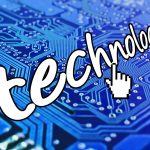Educating special needs students requires a multi-faceted approach that recognizes their unique strengths, challenges, and learning styles. Here’s a closer look at how Individualized Instruction, Specialized Equipment, Assistive Technology, and Behavioral Interventions can be utilized effectively to support students with diverse needs, fostering their academic and social-emotional growth:
Individualized Instruction:
- Individualized Education Plans (IEPs): IEPs are the cornerstone for tailoring instruction to a student’s specific needs. As a teacher, I would collaborate with parents, specialists, and the student themselves to define clear learning goals, accommodations, modifications, and progress monitoring systems within the IEP.
- Differentiated Instruction: This involves adjusting the content, process, or product of lessons to match students’ abilities. This might mean providing texts at different reading levels, allowing flexible choices for projects, or using graphic organizers to support comprehension.
- Small Group or 1:1 Support: Some students may benefit from targeted instruction outside the general classroom setting. This could be for pre-teaching vocabulary before a lesson, working on a specific skill in a quiet space, or receiving emotional support during challenging moments.
Specialized Equipment:
- Sensory Tools: Students with sensory processing difficulties may need tools like fidgets, weighted blankets, or noise-canceling headphones to stay focused.
- Adaptive Equipment: Students with physical disabilities may require modified pencils or grips, slant boards for better posture, or specialized desks and chairs.
- Visual Supports: Picture schedules, written instructions, and visual timers help students with organizational and sequencing challenges understand expectations and manage their time effectively.
Assistive Technology (AT):
- Text-to-Speech Software: Students with reading difficulties or visual impairments benefit from AT that allows them to listen to written text.
- Speech-to-Text Software: Students who struggle with written expression can use this software to dictate their ideas, reducing frustration and increasing their independence.
- Word Prediction Software: This supports students with spelling and vocabulary challenges, suggesting words as they type, increasing writing fluency and confidence.
Behavioral Interventions:
- Positive Reinforcement: Focusing on what students do right and rewarding desired behaviors with specific praise is essential for building self-esteem and motivation.
- Token Economies: These systems, where students earn tokens for positive behaviors and can exchange them for rewards, provide tangible motivation for students who need concrete reinforcement.
- Functional Behavior Assessments (FBAs) & Behavior Intervention Plans (BIPs): When a student presents persistent challenging behaviors, FBAs help identify the root cause and triggers, allowing for the creation of specific BIPs with strategies and interventions to support positive behavioral change.
Important Considerations:
Collaborating with specialists like occupational therapists, speech-language pathologists, and behavior specialists is crucial. They provide guidance on selecting the most appropriate tools and strategies. Consistent communication with parents is also vital to ensure continuity between home and school.
Effectively educating special needs students requires flexibility, patience, and a willingness to learn alongside my students. By embracing these approaches, I can create an inclusive and empowering classroom where every student feels valued and supported in reaching their full potential.



